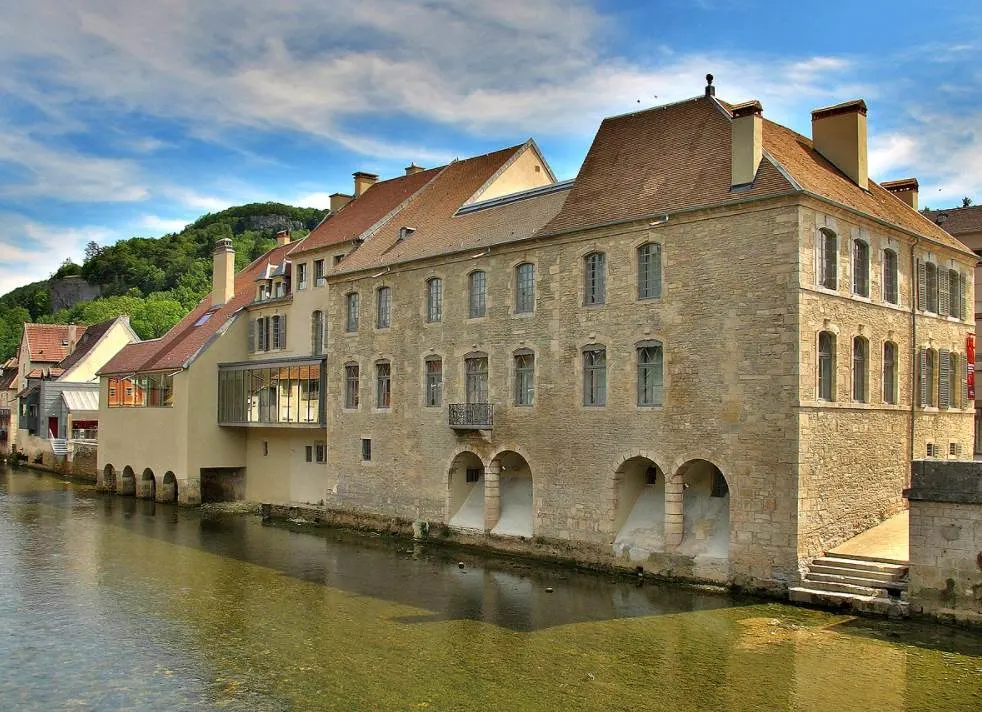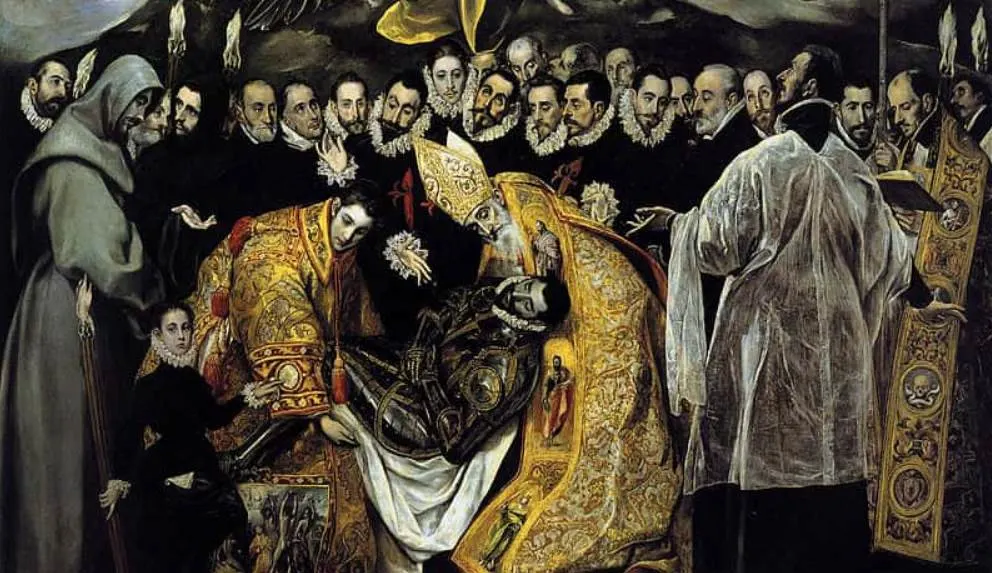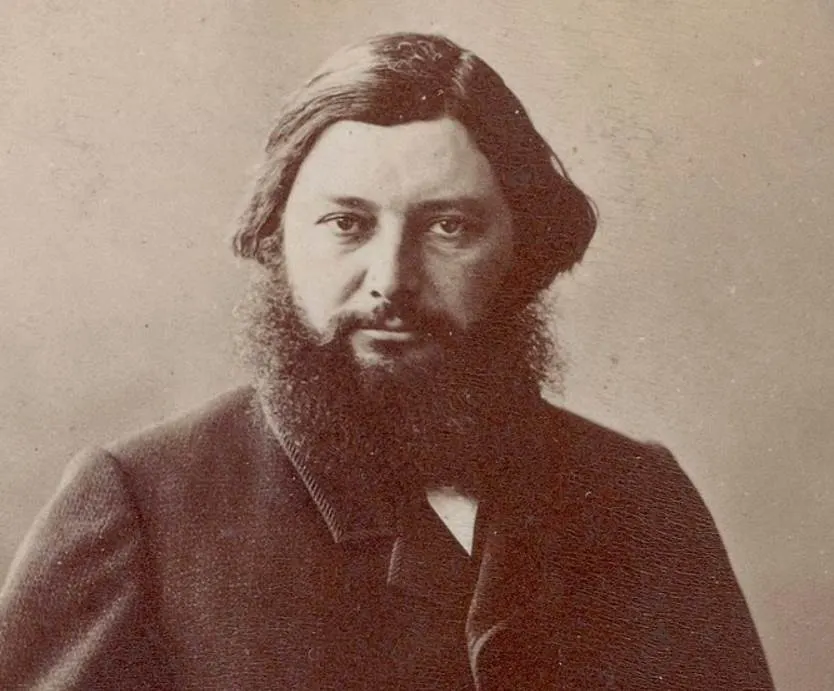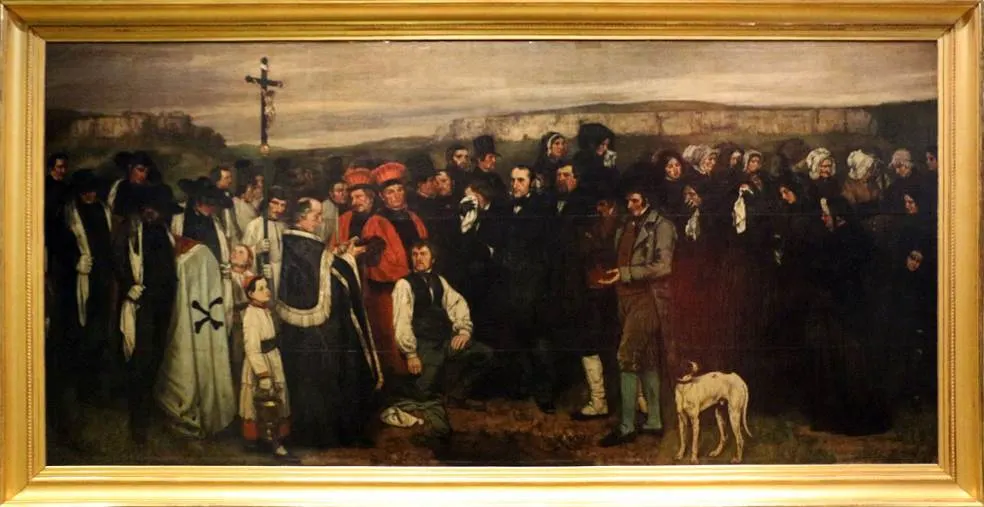The first years of the 1840s were a difficult period for Gustave Courbet (1819-1877), a French artist who was struggling to find his true artistic identity.
His first paintings followed the ideals of the Romantic artists of the first half of the 19th century but he quickly abandoned this. Instead, he chose to produce realistic paintings of everyday people, a type of art that gained success.
Let’s take a closer look at some of the most interesting facts about A Burial at Ornans by Gustave Courbet, one of the ultimate masterpieces of one of the most influential artists of his time.
1. The painting was completed in the early 1850s
Gustave Courbet first visited Paris in the year 1839 and used this opportunity to study paintings at the Louvre Museum. He encountered works of art created by Spanish artists, Flemish artists, and Romantic paintings created by contemporary artists.
He experimented with self-portraits influenced by Romantic artists but this all changed when he visited Belgium and the Netherlands between 14 and 1847. Especially the paintings by Rembrandt had a profound effect on the young artist.
This was a turning point in his life and he decided that he would only produce paintings of what he could observe. This was the start of the Realism movement, although he wrote the Realist Manifesto several years later in 1855.
A Burial at Ornans was one of his first major works and was completed between 1849 and 1850.

2. It depicts a funeral that took place in the artist’s hometown
Courbet was born and raised in Ornans, a small town in the Doubs Department of the Bourgogne-Franche-Comté region. This is in the east of France, not too far away from the Swiss border and just southeast of Besançon.
Ornans is a very small town as it has a population of fewer than 5,000 inhabitants. This means that back in the 19th century it was nothing more than a couple dozen of houses around the local church.

The main attraction in the town is the Courbet Museum, a house in which the family of the artist briefly lived. The museum opened its doors in 1971 and became a Historic Monument in 1982.
The painting depicts a funeral that took place in his hometown in September of the year 1848. This was the funeral of his great uncle and Gustave Courbet was present during this event.

3. The painting resembles a famous work by El Greco
What makes A Burial at Ornans so special is that it depicts the people who were present at the funeral. These weren’t models that Courbet randomly found but people that were there during the event.
Ordinary people were painted just like they were, something that was quite revolutionary in the era following the idealizing Neoclassical paintings and dramatizing Romantic paintings.
In that sense, it resembles a painting that was produced nearly 3 centuries earlier in 1586. Burial of the Count of Orgaz is one of the most celebrated paintings by El Greco, the famous Mannerist artist of Greek origin who lived and worked in Spain for most of his life.
The style of painting, clothes of the figures, and subject matter are quite different, but El Greco also integrated prominent members of his community into this work.

4. It gained Courbet fame in the Paris Salon along with 2 other works
The first painting by Courbet to be accepted at the prestigious Paris Salon was “Self-Portrait with Black Dog,” an unremarkable work with a self-explanatory title.
He got his first breakthrough 7 years later when he got 3 paintings accepted for the Salon of 1851 that all earned him praise. Along with the painting described in this article, “The Stone Breakers” and “The Peasants of Flagey Returning from the Fair” were also exhibited during this event.
The realistic depiction of ordinary people was a novelty at the time and earned him fame, although some conventional art critics were less impressed as well.
Unfortunately, The Stone Breakers was destroyed during World War II. The Peasants of Flagey is on display at the Musée des Beaux-Arts et d’archéologie de Besançon.

5. The painting marked an important moment in the world of art
The unflattering depiction of ordinary people during an event in an obscure provincial town was a far cry away from the dramatical works of art produced by artists at the time.
The large size of the work was usually only reserved for paintings depicting historical or mythological subjects. There’s nothing heroic about people dressed in black while sobbing at a funeral.
The painting has been described as the end of the Romantic era and the starting point of the Realism art movement. Courbet himself once commented don’t he matter saying:
The Burial at Ornans was in reality the burial of Romanticism.

6. The artist came to hate his ultimate masterpiece in his later years
It’s fair to describe Gustave Courbet as a man who wasn’t afraid to shock his audience. He painted several nudes that were banned from public view for several years and combined his shocking paintings with ordinary landscapes, still lifes, and hunting scenes.
He became politically involved during the 1860s and his involvement in the Paris Commune of 1870 eventually landed him in jail for 6 months in 1871.
The most damaging event of his life was the destruction of the Vendôme Column, a monument erected in honor of Napoleon Bonaparte. It was destroyed based on a suggestion that the artist made before and he was ordered to pay for putting the column back up.
He never managed to do that and lived in exile in Switzerland during the final years of his life and died from a liver disease caused by heavy drinking. His final comment on A Burial at Ornans was saying that it was “worth nothing.”

7. How big is A Burial at Ornasn by Gustave Courbet?
The painting was a remarkable sight for contemporary viewers because of the realistic depiction of ordinary people on such a monumental scale.
The oil on canvas painting has dimensions of 315 × 660 centimeters (124 × 260 inches).

8. Where is the painting located today?
Do you want to admire A Burial at Ornans?
Then you have to head over to one of the most popular museums in Paris because it’s part of the collection of the Musée d’Orsay.
The painting was first owned by Juliette Courbet, the sister of the artist. She bequeathed it to the French state and it was moved to the Louvre Museum in 1882. It hung here until 198 until it was moved to the Musée d’Orsay.

